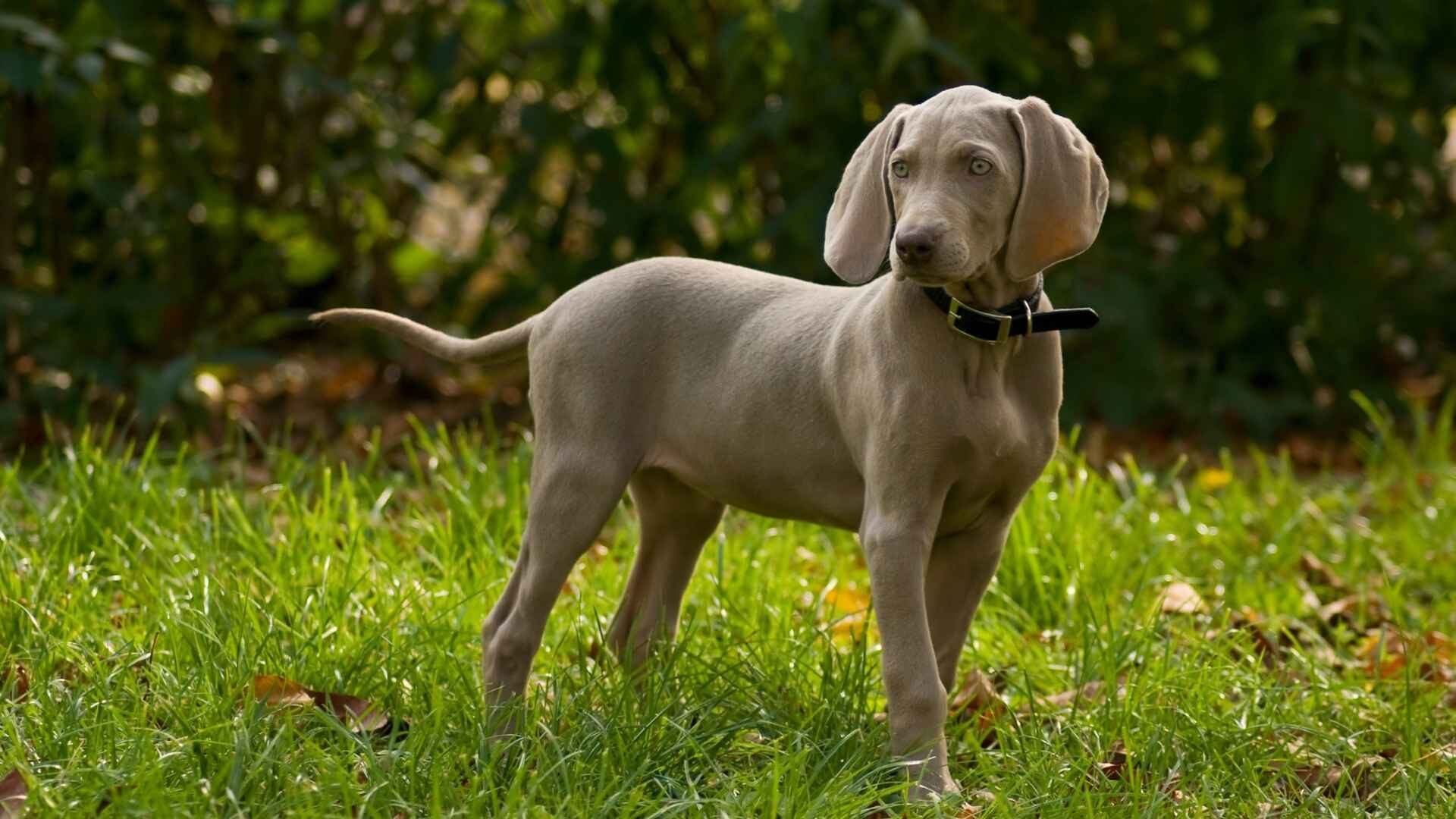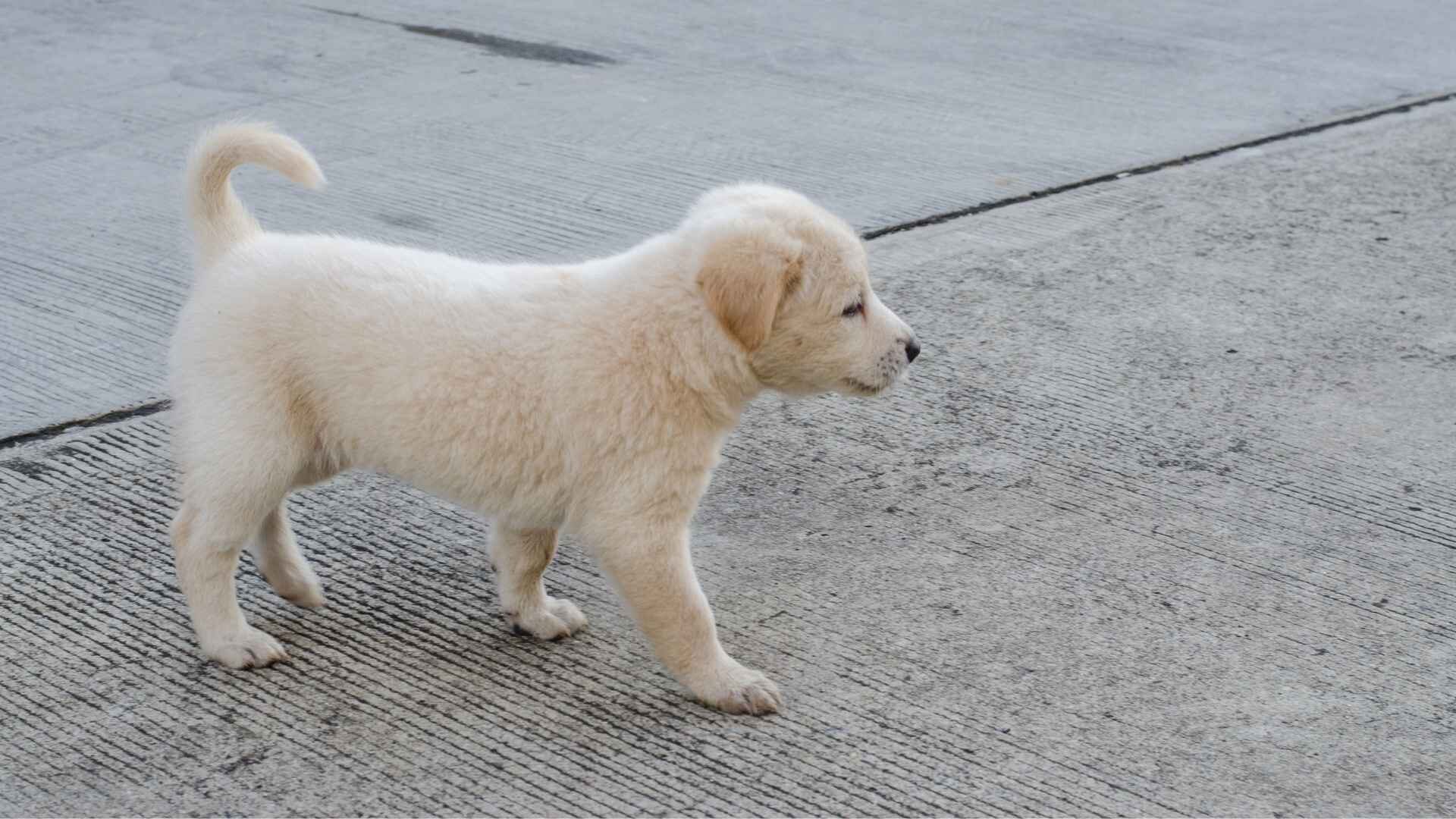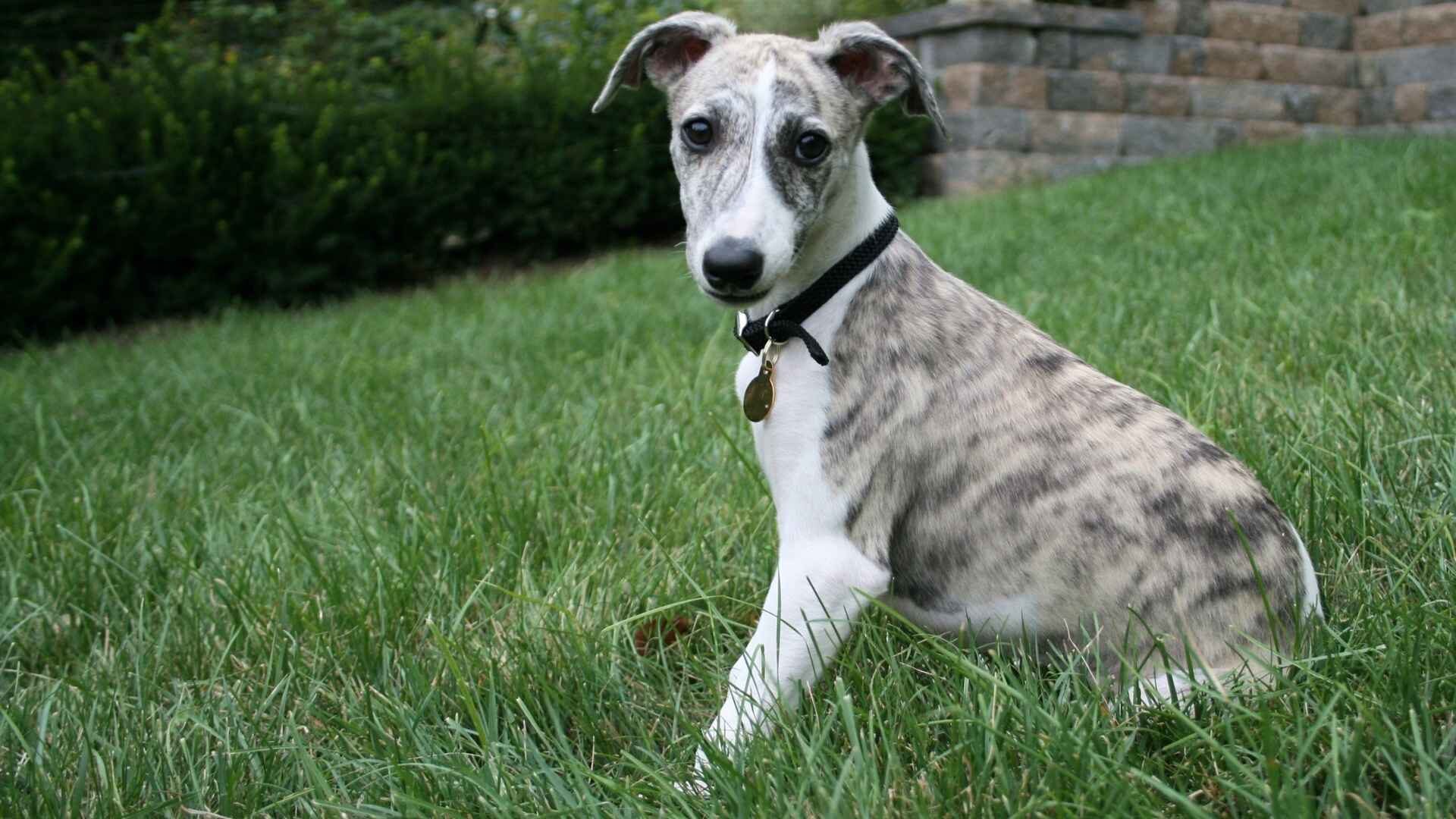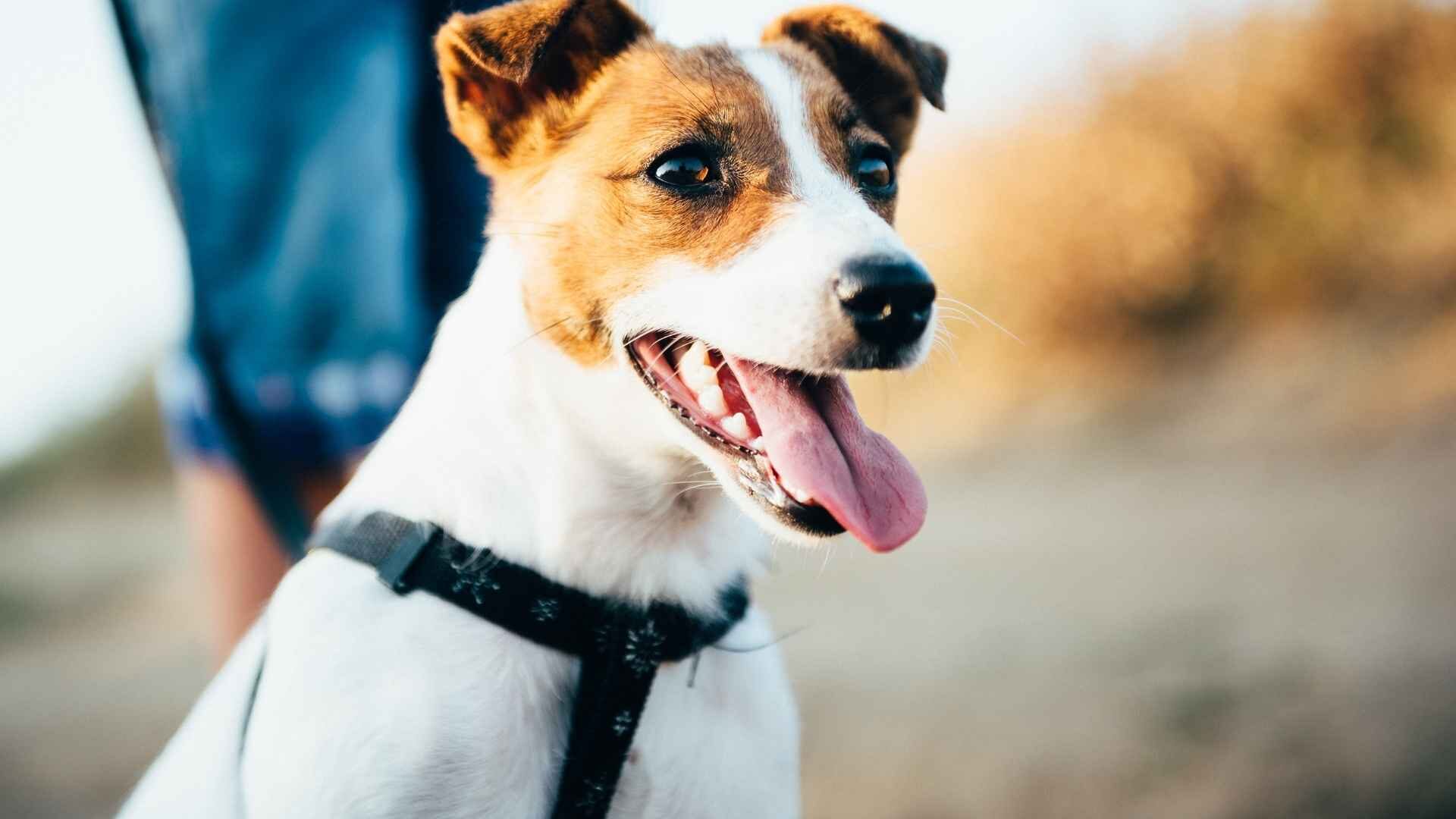The key to success in housebreaking your dog or puppy is patience, dedication, and consistency. Some mishaps are inevitable, but if you stick to these fundamental principles of house training, you can set your new family member on the path to success. Puppies thrive with consistent routines.
They learn that there are certain times to eat, play, and clean up, thanks to the timetable. Puppies typically have bladder control for one hour every month of age. In other words, a two-month-old puppy has the capacity to retain its urine for about two hours. Don’t have them hold it for too long before taking a break to use the restroom; else, accidents might happen.
Whether it’s called “housebreaking,” “housetraining,” or “potty training,” the goal is the same: to educate a new puppy, not to soil the house. The greatest strategy for accomplishing this objective is to set a deadline and adhere to it. Dog cages and puppy pads are excellent training items that may help you build a potty training plan as you stick to your timetable and make sure your puppy learns where he or she should and should not eliminate.
How often should I take my puppy out?

Housebreaking a new puppy is a huge responsibility, especially for first-time dog owners. Dogs may pick up on where to go to the Bathroom with astonishing speed if you know what you’re doing, as learned by dog owners with experience.
Start housebreaking your puppy the moment you bring it home, and don’t let up! You should try to anticipate when your puppy wants to go outdoors, take them there in plenty of time, and praise them for eliminating in the appropriate spot. This trains them to use the outdoors as their toilet.
1. Put aside some time to housebreak your new puppy
If you start housetraining as soon as your puppy gets home and maintain the routine throughout the clock, you will see results much more quickly. That’s why it’s recommended to take a few weeks off work when you first obtain a puppy. You’ll also be able to build stronger ties with your puppy during this period. Use your time off or flexible schedule to get a head start on your fitness routine.
2. Crate training should begin as soon as possible after bringing the pet inside
Dogs don’t want to pollute their sleeping and eating spaces. Therefore crate training is an effective method for teaching them to regulate their bowels and bladders. This is why you shouldn’t get a kennel that’s too large for your dog. Your puppy may assume they can maintain their living area tidy if there is too much room for them to roam.
To prevent your dog from feeling lonely, it’s a good idea to introduce them to the hustle and bustle of your home by placing their cage in a high-traffic area. Alternatively, you might invest in a mobile kennel that you could transport from space to space.
You shouldn’t use the crate as a way to get “out of sight, out of mind” with your dog. Limit your puppy’s kennel time to no more than two hours each day, and make sure he gets enough exercise, playtime, and bonding time with you in between.
3. Get your puppy outside as much as possible
Never keep a dog locked up for longer than it can stand. If you ever have to put them back in the crate because you forgot to let them out, housebreaking will be considerably more difficult. All puppies under six months old need at least one midday potty break and often more.
That being the case, if you’re at the office during the day, you’ll need to find a reliable dog walker to come to your home and let your puppy out. Every dog is an individual, but often speaking, smaller breeds don’t have the stamina of bigger ones. Soiling the cage might be an indication that your dog needs more frequent trips outside.
A puppy’s attention span is about equivalent to their age in months, plus one hour. That amounts to four hours for a puppy of three months. It’s also a good idea to take them out for a potty break whenever they’re likely to need one, such as just after they finish eating or drinking, when they wake up from sleep, or after they’re done playing.
Take them out first thing in the morning and the last thing at night. And keep an eye out for any red flags that could indicate they should go. Behaviors include as whimpering, pacing, circling, or smelling the ground might be indicators. If your puppy exhibits any of these signs of discomfort, you should immediately remove him or her outdoors.
4. Keeping your outdoor routine
When taking your puppy outside for pee breaks, always return to the same “elimination station.” Dogs have a tendency to use the same areas as bathroom breaks. You may save yourself some time and effort if you decide from the outset where in the vicinity you would want them to go. Instead of playing and talking with your dog, let it sniff about you.
Say something like “Go potty” or “Do your business” as soon as you see your puppy starting to urinate or defecate. Soon enough, your puppy will eliminate when called for, which is convenient for trips and walks when you don’t want to lug along a poop bag. If, after a few minutes, your puppy still hasn’t gone to the Bathroom, it’s time to put him or her back in the crate. Provide them with water and try again in around 15 to 30 minutes.
5. Praise and rewards should be lavished upon them whenever they do well
Make the praise passionate, and the food reward high-quality and give both immediately after your dog finishes eliminating. You need to stress how beneficial it is to use the vast outdoors as a toilet. If you wait until you get back inside the home to reward your dog, it won’t associate the treat with the outing.
Take your dog for a stroll or let them play with toys as an extra incentive. They will learn to hold it in order to maximize their time spent outside if they are forced to immediately return inside after relieving themselves.
6. Consider scheduling a trip to the bathroom for the middle of the night
Toilet breaks at nighttime are necessary for puppies under four months old. Don’t get excited or make a big deal out of overnight trips to the restroom; otherwise, your dog may believe it’s playing. If this doesn’t prevent your dog from having accidents at night, try reducing their water consumption in the hours leading up to sleep.
7. Don’t wait to clean up after an accident
You may be the finest dog parent in the world, yet accidents still happen. You should wipe them up as soon as possible, and completely so your puppy isn’t enticed back to the same spot by the scent of its waste.
Instead of trying to cover up the smell with perfume, try using a cleaning solution containing live bacteria or enzymes to digest the waste. Try putting some used towels in the puppy’s “potty area.” Your puppy’s sense of smell will help him remember that this is the correct toilet spot.
What not to do when house training your puppy?

When nature calls, nature calls. To avoid bladder problems or accidents inside the home, your pet will require regular trips outside to “do their business,” just as you would. However, as a first-time pet owner, you may be curious about how frequently your pet will need a go outside.
Do you know whether your new dog is sniffing at the door because he has to go potty or because he wants to play? Is the senior shelter dog you adopted ready for another walk, or are they simply begging to be petted? Being a responsible pet owner who considers their pet’s comfort requires knowledge of how frequently a dog should go outside to relieve themselves.
1. The uniqueness of each dog
Just as every human being is unique—your dad can travel the whole length of a road trip without stopping to urinate, while your grandma insists that the whole family pull over at every rest area, gas station, and fast food joint along the route for a “pit stop”—every dog is also unique. The length of time in between toilet breaks for your dog may be shortened due to a number of causes.
Size and nutritional needs, depending on your dog’s age and breed, will affect how much water he needs.
Take close note of your pet’s routine. Make it a practice to allow your pet out every six hours if you see that he or she is writhing uncomfortably after being confined for so long at home or in the kennel. Do you know that if you have to leave your dog for a long time (say, 10-12 hours), he or she can hold its bladder for that long? You may go for somewhat longer strolls, but remember that holding for extended periods or at regular intervals raises the danger of kidney, bladder, and urethral tract infections.
2. Getting older and needing more frequent bathroom breaks
Puppies, like human infants, have to go to the Bathroom rather often. As a rule of thumb, multiply your puppy’s age in months by one hour to estimate how long they can hold their breath. Therefore, a six-month-old puppy’s bladder capacity is considerably closer to that of an adult dog than that of a one- or two-month-old puppy.
However, a fantastic method to guarantee that your puppy is receiving the training and care it needs is to take it out every hour throughout the day. Also, during the first fifteen minutes after consuming food or water, a puppy is more likely to have to go potty. Take your dog on a walk until it goes Potty within 10 minutes after eating or drinking. If you do this consistently, your puppy will eventually learn that going to the Potty is only acceptable while he or she is outdoors.
Both pups and senior dogs have trouble controlling their bladder capacity. Aging may impair a dog’s memory, leading some owners to feel irritated, although this is seldom due to disobedience on the dog’s part. Most senior dogs need to go outside every four to six hours to relieve themselves.
However, it might vary depending on a variety of factors, including the dog’s breed, size, and health status. Some senior canines may have more bathroom breaks. Hiring a pet sitter is one way to ensure your dog’s health and happiness when you can’t be there to do it yourself. A “safe” spot for your dog to urinate when you aren’t around or when they, like their human counterparts, just can’t make it is a pee pad or newspaper, both of which can be obtained from pet supply stores.
3. What exceptional conditions exist here?
Saint Bernard of the Basin A dog park, with the occupants lounging on the lush grass. Dogs of the large breed are more prone to have bladder control issues than dogs of the little breed. However, little dog breeds often have a lesser bladder capacity than larger breeds, so if they drink a lot of water, they’ll have to go out more frequently to relieve themselves.
A dog’s increased urination needs may also be related to its weight. This is because they are taking drugs that induce or promote frequent urination. They suffer from a variety of ailments, including diabetes. They’ve started going out earlier in the day and drinking more water than normal.
4. When should I contact the veterinarian?
While it may indicate a health issue, a dog’s incessant need to urinate is not necessarily indicative of one. It’s possible that your dog’s increased bathroom breaks are due to his or her age, size, or other variables. However, there are a few indicators that your dog needs to see a vet ASAP, and they are:
Struggle or pain while trying to urinate. A drastic change in urine color, most notably to black or crimson. A sudden clear rise in the number of times your dog has to go out daily, particularly one that’s not tied to any other symptoms. Your pet’s comfort comes first! When you’re making arrangements for your dog, make sure that you take their individual requirements into mind.
5. Breaking it down
Younger dogs and puppies, especially, may need bathroom breaks every hour. As a puppy becomes older, you may add one hour for each month of the dog’s age. A senior dog can normally go four to six hours without going outside.
Adult dogs often need to go out every 6-8 hours at a minimum. Some dogs, especially those who have been crate-trained or whose owners are routinely gone for long stretches of time, may remain calm and quiet for up to 12 hours without becoming agitated. This is, however, quite unusual and should not be expected of your dog.
The more you know your dog, the better you will be at estimating how often they need to be brought outdoors. As you learn to pay attention to your pet’s signs, you’ll notice that you’re able to quickly detect the difference between a desire to play and a legitimate need to go outdoors. Letting your dog out often, however, will help you to boost their comfort and lessen the number of messes around your home.
What are typical puppy potty training situations?

Puppies may be trained to use the Bathroom on the toilet with persistence, patience, and rewards. The purpose is to strengthen your relationship with your pet and train it in excellent manners.
Housebreaking a puppy usually takes between four and six months but may take as long as a year. There is a correlation between size and other characteristics. One reason why smaller dog breeds need more frequent bathroom breaks is that they have smaller bladders and higher metabolisms.
The environment in which your puppy was raised is another factor. Your dog may require your assistance in breaking bad behaviors before you can teach it new, good ones. And if you have any failures in training, that’s okay. Your puppy will learn quickly if you stick to a management plan that involves bringing them outside at the first indication of the urge to go and rewarding them when they succeed.
1. When should I start housebreaking my puppy?
The ideal age to start housebreaking a puppy is between 12 and 16 weeks. When kids reach this age, they have developed sufficient control over their bowel and bladder functions to begin training themselves to retain them. The process of house training may be more difficult if your puppy is older than 12 weeks when you bring it home and has been eliminated in a cage (and potentially ingesting its waste). Dog behavior modification requires positive reinforcement.
2. Crate training your puppy
Housebreaking your puppy may go more smoothly with the help of a crate, at least initially. You can train them to hold it until you take them outdoors by keeping a close watch on them while they’re crated.
3. What to expect when your puppy needs to go potty
If your puppy is free to roam about the house, he or she will let you know by whining, sniffing, barking, or even barking and clawing at the door. Just get rid of them now.
4. Negative developments in housebreaking
Up until they reach the age of one year, accidents are rather prevalent among puppies. Accidents may occur for a number of reasons, including a lack of thorough house training or a sudden shift in the puppy’s routine. Don’t give up on training if your puppy has an accident. And if it doesn’t work, a vet visit is in order to rule out any underlying health problems.
When to call a vet if your dog doesn’t go outside?
When a pet acts out of the ordinary, it might be difficult to tell whether it’s a true emergency or just a usual occurrence. Please don’t be ashamed to phone us if you see any unusual behavior in your pet or if you have any other concerns. Expert veterinarians and support staff are on hand and ready to help.
There is no such thing as a stupid query or insignificant worry. Dr. Jim Kennedy of Greencross Vets City Road cautions that even though your pet may seem unharmed on the outside, animal conflicts may inflict internal damage that is not apparent to the human eye.
You should take fast action if you think your pet has been struck by a vehicle. Dr. Kennedy stresses the possibility of crushing injuries without skin penetration. An automobile collision might cause internal organ damage to your pet. If your pet has been hurt, you must get them to the vet immediately.
Dr. Kennedy advises, “It is preferable to be safe than sorry if your pet has been vomiting regularly or has had diarrhea for 24 hours.” When vomiting occurs, it is not always causing for alarm. An underlying issue may be signaled by the symptom. Whenever you have concerns about the health of your pet, don’t hesitate to get in touch with your neighborhood Greencross Vets.
How to potty train your puppy to go outside?

Puppies thrive with consistent routines. They learn that there are certain times to eat, play, and clean up, thanks to the timetable. Puppies typically have bladder control for one hour every month of age. In other words, a two-month-old puppy has the capacity to retain its urine for about two hours. Don’t have them hold it for too long before taking a break to use the restroom; else, accidents might happen.
At the very least once every two hours, as well as right away upon waking, after play, and before and after feeding, your puppy has to go outdoors.
Determine an outside location and often take your dog (while leashed) there. Utilize a cue word or phrase when your dog is defecating that you may later use before they go to remind them. It is best to wait to take them for a long walk or to play with them until after they have relieved themselves.
It’s important to praise your dog each time it does Potty outside. Reward them with praise or goodies, but do it as soon as they’re done playing outside, not after they’ve returned inside. This is a crucial step since praising your dog for going outside is the only way to teach them the appropriate behavior. Make sure they’ve completed the task before paying them. Puppies are often sidetracked, so be careful about lavishing praise on them before they’ve finished the task at hand.
Establish a consistent feeding regimen for your dog. What a puppy eats on a timetable is what it will be ready to poop out. Puppies may need to be fed twice or even three times a day, depending on how old they are. If you feed your puppy at regular intervals throughout the day, you can expect it to have regular bathroom breaks, which will streamline the housebreaking process for both of you.
Remove the water bowl from your puppy’s sleeping quarters around 2.5 hours before bedtime to cut down on bathroom breaks. A puppy may go around seven hours between trips to the Potty during sleep. Don’t make a big deal out of it if your puppy wakes you up in the middle of the night; otherwise, it will believe it’s time to play and won’t want to go back to sleep again. Dim the lights as much as possible, ignore your dog, and let it go potty in its designated area before returning it to bed.
Watch When can I take my puppy for a walk | Video
What is the recommended frequency of nighttime potty breaks for a puppy?
Remember that pups under three or four months old need to go outdoors at least once per night. The first few weeks after bringing your new puppy home, you should set the alarm to remind you to take your dog to the outside Potty around five to six hours after its previous bathroom break.
At 12 weeks old, how frequently should I take my dog for a walk?
All things considered, they have adequate visual and auditory capabilities. They are acquiring the ability to recognize individual aromas. Puppies of 12 weeks of age typically have a bladder capacity of 4 hours. This means you need to “housebreak” them by taking them out at regular intervals of at least four hours.
If I have a 10-week-old dog, how frequently should I take it outside?
Your puppy has to go outdoors at least once every two to four hours, and each time there is a significant change in routine. This will help immensely in reducing the number of mishaps that occur during house training. The best kind of exercise for a puppy is a series of brief bursts of playtime spread out throughout the day.
How Long Does A Puppy Of Eight Weeks Old Sleep At Night?
However, you should know that he has some serious limits. A small percentage of newborn pups may go six or seven hours between bathroom breaks. However, many babies are unable to accomplish this until they are around ten weeks old. For the first two weeks, a crated puppy will need to be let out every few hours to relieve itself.
Do I need to take my puppy outside with me every time he has to urinate?
Since pressure is placed on the intestines and bladder by a full stomach, a puppy should be taken out soon after eating. Dogs should be housebroken as soon as possible after they arrive at their new home, or at the latest by the time they are 8 to 10 weeks old.
Conclusion
Consider adopting a 9-week-old dog. To expect children to be housebroken at such a young age is unreasonable. There are a number of variables to consider, including the puppy’s size and when you begin housebreaking.
By the time they are six months old, most pups are reliable. Still, it may take some pups up to a year to master using the doggy bathroom. Most pups develop bladder control somewhere between the ages of 20 weeks and five months. However, housebreaking a dog may take more time than you expect.
Housebreaking a dog is similar to teaching a baby to use the toilet. To have a potty-trained puppy faster, it is best to devote more time and energy at the beginning of the training process. Putting in the time and effort at the beginning of the puppy’s life will save you time and effort later on. Maintaining a regular routine is essential for successful puppy house training. An assured and content canine is the product of consistent praise and frequent bathroom breaks.
Bottom up
Please comment below about your ideas and share this “How Often Should I Take My Puppy Out: Stepwise Guide” article with your friends.
Stay tuned with our website to find out more exciting stuff. Don’t forget to check out our previous articles too.
Until the, Read about, How to Feed a Dog with Diarrhea: Guide with 6 Homemade Foods





